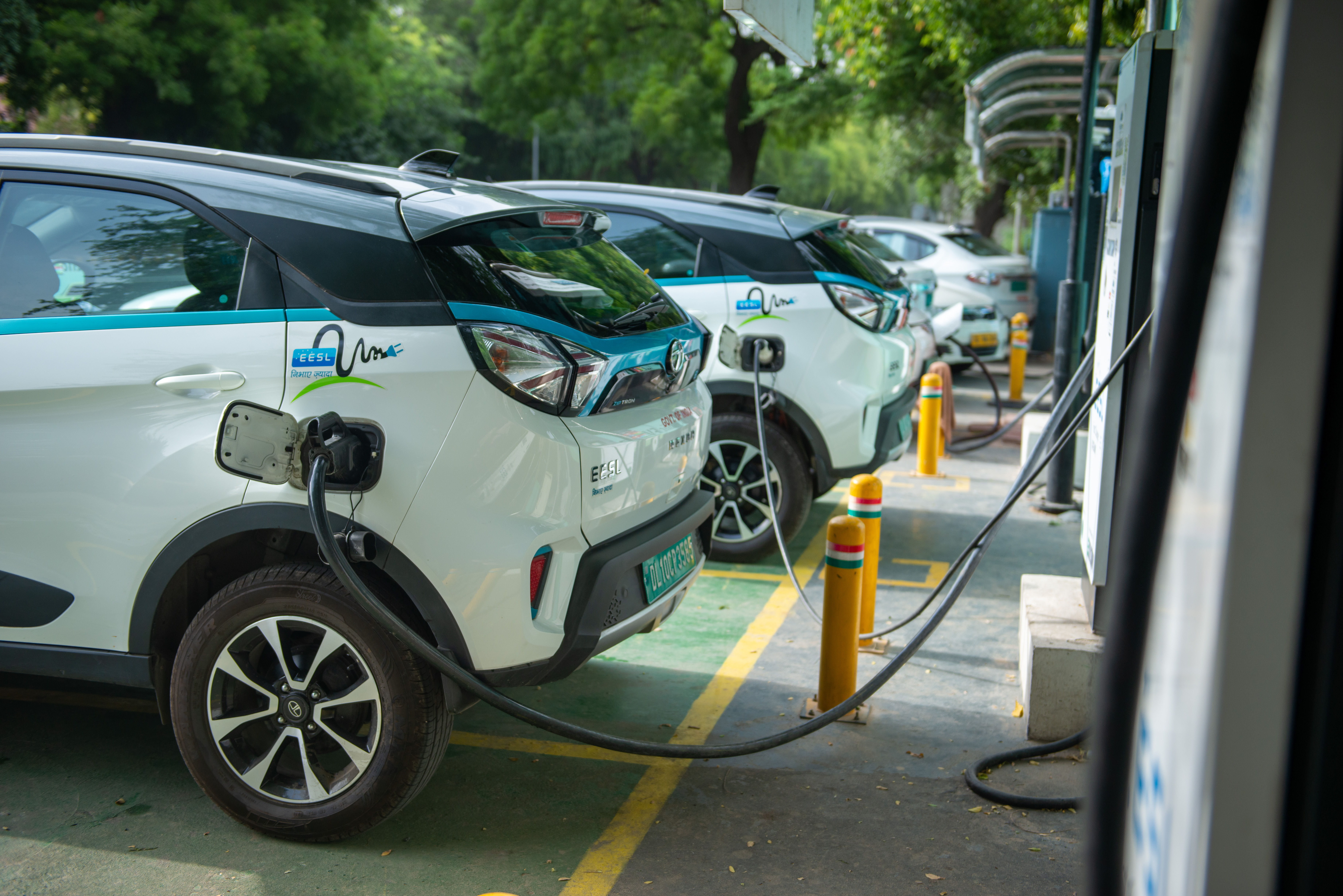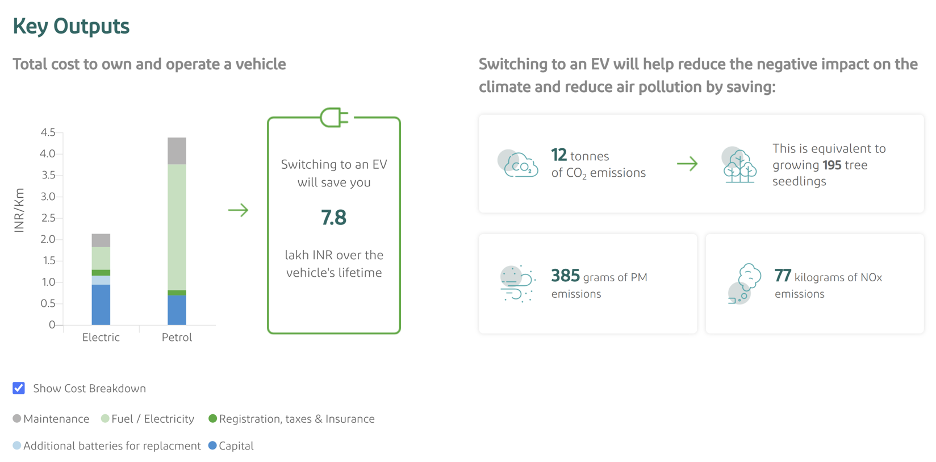Media
Deciding Whether an Electric Vehicle Makes Sense?
March 25, 2023 | Pranav Lakhina (RMI), Chetna Nagpal (RMI India)

India is witnessing an unprecedented transition in the transportation sector, with electric mobility at the forefront of this revolution. According to the Vahan Dashboard, electric vehicles (EVs) represent 5% of all new vehicles registered in 2022. The Shoonya Zero Pollution Mobility campaign launched by NITI Aayog and RMI is helping drive EV adoption in India by propelling the delivery and ride-hailing segments on a pathway to 100% electrification. Shoonya targets urban delivery and ride-hailing segments that are critical in satisfying the daily mobility needs of consumers.
However, these segments are dominated by internal combustion engine (ICE) vehicles, which emit particulate matter (PM) and nitrogen oxide (NOx) leading to poor air quality and negative health impacts. ICE vehicles also emit significant amounts of carbon dioxide (CO2) contributing to global warming. On the other hand, EVs have zero tailpipe emissions, leading to improvement in local air quality. Moreover, electric delivery and ride-hailing vehicles emit 40%–75% fewer CO2 emissions than their ICE counterparts over their lifetime.
In addition to environmental benefits, EVs have a lower total cost of ownership (TCO) — the cost of owning and operating a vehicle over its lifetime — than ICE vehicles. TCO includes two main components — capital expenditure (CAPEX) and operating expenditure (OPEX). CAPEX involves financing the upfront cost of the vehicle, be it outright purchase, buying the vehicle via loan, or leasing the vehicle, and any associated one-time registration fees and taxes. OPEX involves the cost of running the vehicle throughout its lifetime, which includes the cost to refuel/charge the vehicle, and money spent on repairs, maintenance, servicing, insurance, and any additional tax payments.
Typically, EVs have much lower OPEX than ICE vehicles because EVs are more efficient than ICE vehicles, requiring less energy to run the same distance. Moreover, EVs have fewer moving parts than an ICE vehicle lowering the cost for repairs. However, CAPEX for EVs is currently higher due to the high price of lithium-ion batteries, which contribute to 35%–47% of an EV’s upfront purchase price. In order to bring down the upfront cost of EVs, the central and various state governments are offering purchase incentives. With these incentives along with EVs’ lower OPEX costs, the TCO for EVs is lower than ICE vehicles.
While EVs offer a host of economic and environmental benefits, such advantages are not thoroughly known or understood by consumers when deciding to purchase EVs. Therefore, the Shoonya Zero Pollution Mobility campaign is working with public and private sector stakeholders to spread awareness about EVs and their benefits. The Shoonya campaign’s online toolkit generates and disseminates consumer-friendly information. The EV Calculator is one of the toolkits that helps users visualize the cost and environmental benefits that they can incur by switching to EVs.
With the EV calculator tool, the user selects inputs such as preferred vehicle type, use case — delivery or ride-hailing — region, and daily distance requirement, and selects a fuel type to compare against such as CNG, petrol, and diesel. The calculator then outputs a TCO comparison on a per-kilometer basis, total cost savings over the vehicle’s lifetime, and CO2, PM, and NOx emissions reductions (refer to Exhibit 1).
For example, an electric three-wheeler delivery vehicle running 100 km a day in the state of Maharashtra has a TCO of 2.2 INR/km, compared with 4.4 INR/km for a petrol three-wheeler, saving the owner around 7.8 lakh INR over the vehicle’s lifetime. The interactive graph can help the user understand more about each cost component. In addition to cost benefits, the visualization also shows how switching to EVs can help reduce 12 tonnes of CO2 emissions, 77 kg of NOx emissions, and 385 grams of PM emissions. The easy-to-use dashboard along with rich details related to cost and environmental benefits helps fleet operators and end-users with better decision-making around their vehicle purchase.
The author thanks Riya Saxena of RMI India for her valuable insights.

Through such tools, the Shoonya campaign is actively engaging with fleet operators, drivers, and individual consumers to help them understand the benefits associated with EVs. By accelerating the adoption of EVs for final-mile deliveries and last-mile connectivity, India can reduce both the operational costs and the vehicular emissions associated with increasing transportation and mobility demand, the benefits of which can be passed on to consumers and society.




